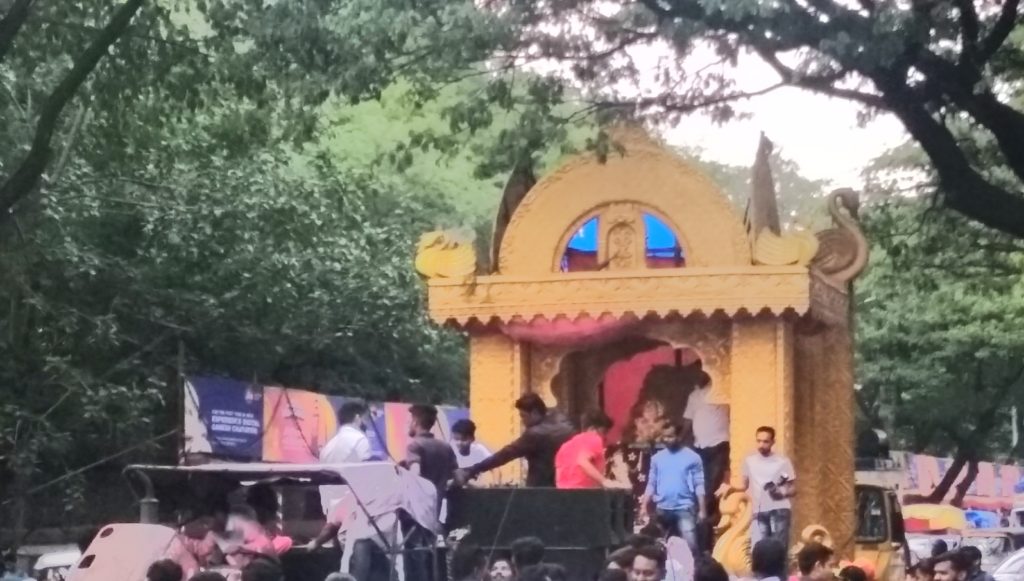‘Not much difference in noise level of Dhol Tasha & DJ, speakers during Ganpati immersion procession’

DJ music police action
Sumit Singh
Pune: Though Pune City Police have begun filing cases against groups for using speaker walls, DJ music systems, a study by students of the College of Engineering Pune (COEP) has revealed that there is no much difference between noise levels of traditional Dhol Tasha and DJ/speakers sound.
Dr Mahesh Shindikar and his team of students are studying the noise level during Ganeshotsav in Pune for the last 10 years.
He said that in the last few years, the number of Dhol Tasha groups have increased. So, the level of noise is also increasing. Usually, if the four Dhol and 25 Tasha play together, then its sound easily goes beyond 80 decibels. If the player increases, then the sound level is same as that of speakers wall. In fact, Laxmi Road comes under the residential and commercial zone. Therefore, the noise limits on this road are expected to be 65 decibel during daytime and at night 55 decibels. Leave Ganeshotsav, on this road the noise level is always higher than prescribed limit throughout the year. Though the government’s ban on the wall of the speaker is said to reduce pollution, but if number of Dhol Tasha groups go on increasing then they will produce same level of noise.
Therefore, it is curious that what action police will now take against Dhol-Tasha groups members who continue to play music on speakers wall.
The High Court has upheld the ban imposed for playing DJ in the Ganapati immersion procession. As a result, this year, there is talk of declining noise pollution in the immersion procession. However, information about the polling conducted by the Maharashtra Pollution Control Board and the Environmental Surveyors every year is also being widely used in the drum-tasha controversy.
According to the survey, Dhol-Tasha teams comprise the highest number with 5 Manache Ganpati processions. There is not much difference between their sound and speaker wall in the evening. Statistics show that almost same level of sound pollution is there due to both traditional musical instruments and speakers, DJ.
Police had imposed restrictions on the number of dhol tasha teams last year, as well as limitations of night board speakers. Because of the strict compliance of the rules, the highest sound pollution in the last six years was recorded. However, the increase in pollution in the suburbs indicates increased pollution.
The sound of the suburbs grow
Due to the attraction of the Dhol-Tasha Squad, there has been a plan to call the teams in the process of rallying in the residential area in the last three years. Team participation increased in one and half day, five days, seven days and ten-day Ganpati processions. It has been found in the study that there was an increase in sound pollution in the suburbs of Pune.
Side effects of sound pollution on human health
– The heartbeat increases, blood pressure increases
– It becomes irritated, insomnia
– Pregnant women suffer from stress
-Deafness, the hearing of the ear can be decayed
– Mental health worsens
– There is a contraction of blood vessels in the body. Depression comes





